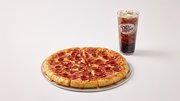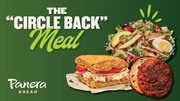Marketing
Fast casual brands plan to expand local marketing in 2026
How regional campaigns and micro-influencers are fueling more in-store traffic and online orders.

November 3, 2025 by Kate Finley — Founder, President, Belle Communication
For fast casual brands, juggling national marketing efforts with local engagement remains one of the industry's constant debates and struggles.
Even as most franchisors require corporate advertising fund contributions and 78% encourage local spending, the right mix of national and grassroots strategy can be difficult to define.
"It's a really interesting time of finding that balance of national and local, but then also kind of starting to blend the two together too," explained Kelly O'Rourke, head of marketing at the customized drink chain FiiZ.
The brand is currently evolving to implement more regional and cross-channel marketing, a model driven by its 70+ stores and 99% franchised structure.
And they're not alone, with restaurants like Surcheros, a 40-unit Tex-Mex chain, committing to doing more regional marketing in 2026, leaning into hyper-targeted media buys, micro-influencers and local partnerships.
The power of local
Fast casual diners increasingly crave brands that feel rooted in the communities they serve. Mintel's US Fast Casual Report 2025 found that 58% of consumers say they're more loyal to restaurants that "act local," whether through partnerships, menu items or community engagement.
The National Restaurant Association's 2025 State of the Industry Report echoes the sentiment, stating that diners are more likely to frequent restaurants that show up meaningfully in their neighborhoods.
For Surcheros, maintaining a strong community presence translates directly into measurable ROI. Vice President of Marketing Jami Kimbrough says the brand's local marketing efforts consistently drive both in-store traffic and online orders.
But digital efficiency is only one side of the local equation. Kimbrough says every market launch starts with the same first step — calling local schools.
"When we enter a new market, the first phone calls are always to local schools to see how we can support and partner with them," she said. "Whether it's sponsoring a sports team, catering a banquet, or hosting a fundraiser night, we find that communities support the businesses that support them in return."
O'Rourke at FiiZ agreed. "At the hyper-local level, what we see work the best is old school, guerrilla, boots on the ground marketing, like being involved in a store's community, whether that's PTA events, high school booster clubs," she said, noting that even traditional tactics like direct mail continue to perform surprisingly well for franchisees.
Regional micro-influencers
One of the biggest shifts in fast casual marketing can be seen with influencer partnerships. More chains are leaning into creator rosters that include regional micro-influencers, not big-time personalities.
"We focus on micro-influencers to drive ROI for our franchisees rather than macro-influencers," said Kimbrough. With some corporate-run campaigns, franchisees are also encouraged to work directly with influencers in their own communities.
Fast casual earnings data support this strategy, with the strongest gains seen by brands leveraging hyper-local marketing, outperforming those that stick with uniform, nationally focused promotions.
Local micro-influencers offer something national voices can't: cultural fluency. They speak their city's language and understand neighborhood humor, dining rituals and the subtle cues that make a message feel genuine. Their audiences see them not as advertisers, but as trusted peers. And that trust shapes where people choose to eat.
Many fast casual brands tap these smaller creators for grand openings, but the opportunity is broader. Engaging regional voices throughout the year can build sustained visibility and credibility beyond the ribbon-cutting moment.
Mixing national and local via social
"As we grow, we're starting to try and find that balance of what's that next middle tier between big national brand marketing and that super hyper local grassroots marketing," explained O'Rourke.
"Our social channel is a great example for this whole conversation. Because we're very cognizant in that channel of not being too regionalized in any way, but also wanting to elevate really cool regional things that are happening."
FiiZ's recent partnership with Blue Man Group in Las Vegas showcased the brand's ability to turn local activations into national buzz. What began as a two-store collaboration quickly became a catalyst for broader awareness, reinforcing FiiZ's strategy of blending community-based marketing with high-visibility cultural partnerships.
This blended approach goes both ways, more often starting as a national campaign or LTO launch with regional arms.
Earlier this year, CAVA partnered with six college athletes, each posting content in their local markets during tournament season — a hybrid of national storytelling and local reach. Shake Shack and Freddy's Frozen Custard & Steakburgers have followed suit, using regional athlete partnerships and charity tie-ins to bridge both worlds.
Community as a KPI
For both FiiZ and Surcheros, one principle holds constant: when sales lag, look local.
"If we have stores that feel like maybe their sales have kind of dropped off or sluggish or that they could be doing more, that's one of the first things we ask them: what are you doing in your community?" O'Rourke said.
While national campaigns remain essential for building upper-funnel awareness and brand consistency, the most effective lower-funnel marketing often begins at the neighborhood level.
About Kate Finley
Kate Finley is the founder of Belle Communication, a best-in-class PR and creative strategy firm that helps brands think bigger for now + next. The firm has partnered with more than 100 brands, including Shake Shack, First Watch, The Halal Guys, Nestlé, and Jeni’s Splendid Ice Creams.












